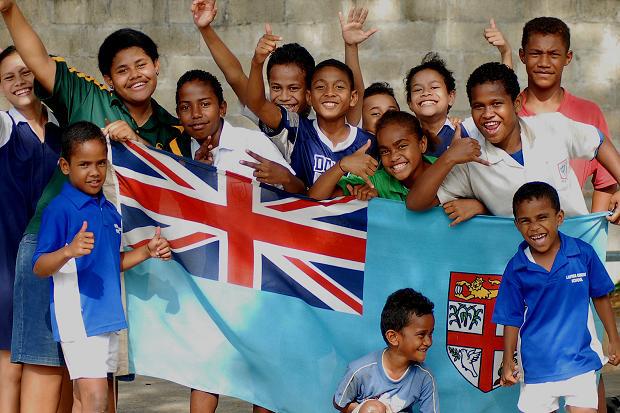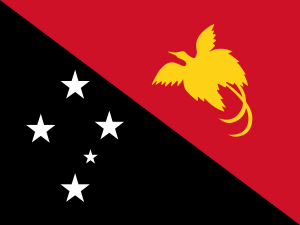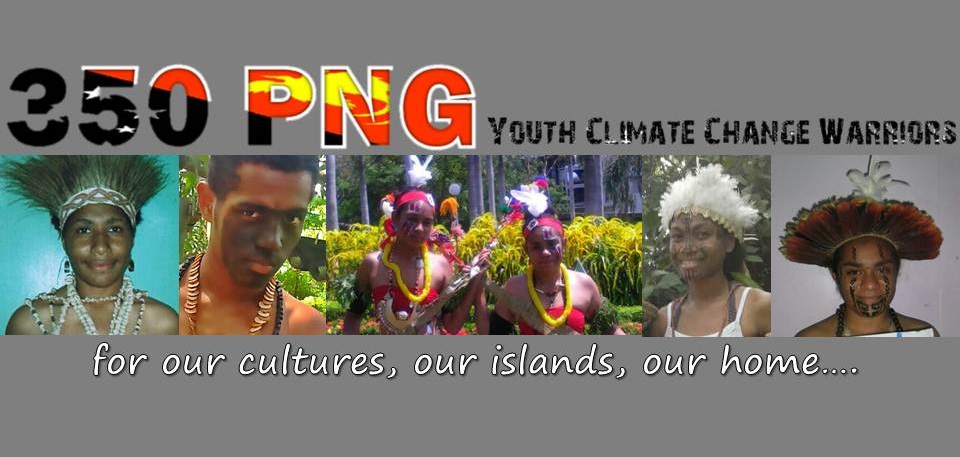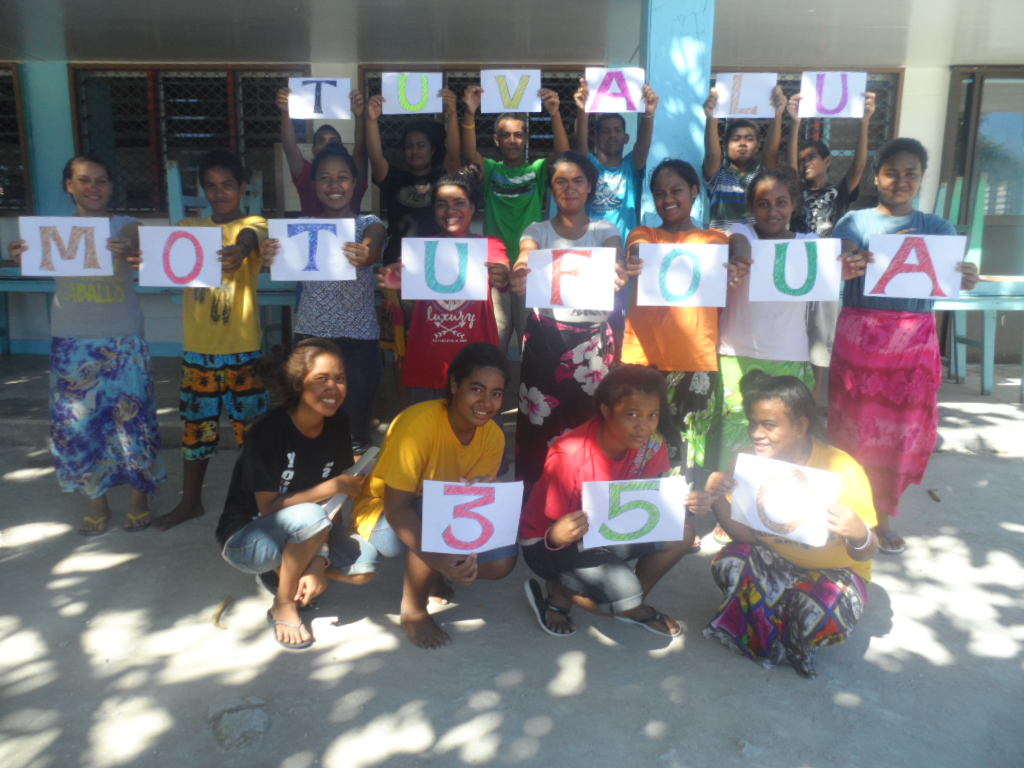350 Canada
Menu350 Pacific Island Directory
Contact your local 350 team
FIJI, PAPUA NEW GUINEA, SOLOMON ISLANDS, KIRIBATI, AMERICAN SAMOA, NIUE, SAMOA, TOKELAU, TONGA, TUVALU, VANUATU.
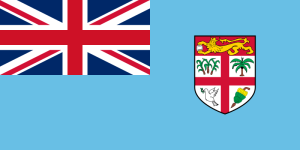 FIJI
FIJI

"We are not drowning, we are fighting. We must flip our approach to climate change today, before the future we deserve flops."
- George Necawa, 350 Fiji.
What is 350 Fiji all about?
350 Fiji is part of 350's Pacific division - and is a regional youth-led climate change network, driven by young climate leaders. These young members are actively leading the fight against climate change, steering the "100% possible to be heard" regional campaign throughout Fiji. The official campaign launch took place on March 2, 2013 with the 'Pacific Islands Day of Action Warriors Challenge'.
The idea behind the Warriors Challenge was to showcase the island community's unique warrior spirit, awakening the warrior within all Fijians. With this strength behind them, we hope the people of Fiji believe that they can challenge climate change and the fossil fuel industry. The Warriors performed dances and chants at prominent Island locations; to highlight that despite the challenges climate change presents the Pacific, Fiji will not admit defeat. Instead, the proud Fijian people will defend their land, culture, and identity to the very end.
What climate changes are occurring in Fiji, and what's next?
- Temperatures are increasing, and will continue to increase: In the capital city Suva, maximum temperatures have increased at a rate of .15°C each decade since 1950.
- Sea levels have risen: Since 1993, sea level has risen 6mm per year. This is quicker than the global average and leaves Fiji vulnerable to more damaging tidal surges from storms.
- The surrounding ocean is becoming increasingly more acidic: About one quarter of human produced CO2 is absorbed by oceans, making them more acidic. This impacts species vital to the tropical reef ecosystems. Since the 1900s, ocean acidity has been increasing around Fiji.
- More intense tropical cyclones: While it's predicted there may be less tropical cyclones, their intensity will increase. This means faster wind speeds, and greater rainfall intensity.
——————————————————————
More detailed information from the Australian Government's 'Pacific Climate Change Science Program' can be downloaded here --> Fiji Climate Change Factsheet PDF.
What is the Fijian Government's official statement on climate change?
Commodore Josaia Voreqe Bainimarama made the opening statement in 2013 at the National Climate Change Summit, his words can be found at this link.
——————————————————————
What's the overriding message of your campaigns?
The main message 350 Fiji hopes to portray is that this is a campaign of the people. The fight is "100% possible with you". We aim to move Fiji towards 100% renewable energy, but this is only possible with the support of the people. The people form the community, and we believe the community wants more clean sources of energy. For this message to flow from the grassroots level right up to the policy sphere then we, as individuals, must take action. Our campaigns also represent an opportunity for Fiji to become a pioneer of clean energy, encouraging those responsible for the majority of climate altering emissions to be more accountable, while pushing them to follow our example and move towards renewable energies.
What's next for 350 Fiji?
350 Fiji truly believes that 350 Pacific's next campaign 'Stand up for the Pacific' will further the great work that's already occurred on the Island. The previous campaign promoted a belief that something can be done, while the next will provide us with the confidence required to begin our fight.
Power House Individuals
Five dedicated individuals with vast experience in the areas of Environment, Project Management, Public Relations and Marine Science help to guide 350 Fiji, as well as contributing to 350 Pacific's ongoing projects. The core team meets when they can, and aim to set up their own foundations by which they can better support both their own, as well as 350 Pacific's needs.
Contact 350 Fiji
It's best to contact us through our facebook page, available at www.facebook.com/350Fiji. Additionally, 350 Fiji can be contacted at [email protected].
 PAPUA NEW GUINEA
PAPUA NEW GUINEA
"Through 350 PNG, we hope to create a generation of young people willing to stand up not only for PNG and the Pacific Islands, but the world."
- Arianne Kassman, 350 Papua New Guinea
Who are 350 PNG, and what's it all about?
350 PNG first formed with the help of the Youth Against Corruption Association (YACA) in September 2013, and today 350 PNG still operates under it.
Despite being young ourselves, we are still the first youth climate change movement in PNG. We've found that despite the many climatic challenges which are being made worse by climate change throughout PNG, many of today's youth didn't really understand what's actually happening to our climatic system. We hope that our efforts can help educate and empower the young people within PNG to fight back against climate change. We see a new generation of young people willing to stand up and fight for the safe climate they deserve.
What climate changes are occurring in Papua New Guinea, and what's next?
- Average temperatures continue to rise: Maximum temperatures have increased on average .11°C every decade since 1950.
- Sea level has risen: At a rate more than double the global average, at 7mm per year. While this may be due to decadal fluctuation, it remains worrying and is expected to continue.
- Oceans continue to grow more acidic: Since the 18th century, acidification of the ocean around PNG has slowly increased, and is expected to continue increasing.
- Less frequent but more intense storms: Wind speeds expected to increase, as well as rainfall intensity.
- More extreme rainfall days: These will occur more often, increasing the likelihood of flooding.
- Climate Refugees: In 2009, some residents of the Cateret Islands 80km off Bougainville became the first climate refugees following years of worsening storm surges and king tides.
——————————————————————
More detailed information from the Australian Government's 'Pacific Climate Change Science Program' can be downloaded here --> PNG Climate Change Factsheet PDF.
What is the PNG government's official stance on climate change?
In 2011, Vice Minister for Forests and Climate Change in Papua New Guinea Mr Ronald Asik made a statement at the UNFCCC 17th Conference of the Parties in Durban South Africa. His statement surrounding climate change (and forestry policy) can be found at this link.
——————————————————————
What's the overriding message of your campaigns?
We aim to show the youth of PNG that it's possible to change the path. We want the people of the PNG to understand climate change itself, understand the threats that climate change may impose upon PNG, but also understand that a collective voice can make a difference. Through the combined efforts of our elected representatives, businesses, civil society organisations, faith based organisations, individual citizens, and a government committed to the fight against climate change, we can together effectively reduce our carbon footprint and secure a future for generations to come!
What's next for 350 PNG?
The first thing we've planned is the Youth Climate Change Warrior training, which is the first of its kind in PNG! The program will run over the 18th - 20th of January 2014, and our progress will be shared on the 350 Pacific Facebook page. More events planned for 2014 include: an informal, national 350 PNG day, photo campaigns, youth forums and many more!
Contact 350 PNG
For more information on how to get involved, email the 350 PNG coordinator on [email protected]. Thanks!
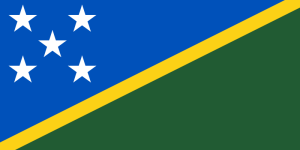 SOLOMON ISLANDS
SOLOMON ISLANDS
 What climate changes are occurring in the Solomon Islands, and what’s next?
What climate changes are occurring in the Solomon Islands, and what’s next?- Sea Level has risen: Since 1993, sea level around the Solomon Islands has risen by a massive 8mm per year. Amongst other things, this is impacting food security, with important root crop 'taro' dying due to the rising salty waters.
- Temperatures continue to rise: Since 1951, the temperatures have increased by 0.15°C per decade, leading to more hot days - and more pressure on food security.
- More extreme rainfall days: Model projections show that extreme rainfall days will likely occur more often.
- Less frequent, more intense storms: In the Solomon Islands region, an increase in the proportion of more intense storms is likely by the end of the 21st century.
- Relocation?: An issue of national debate in the Islands has been the relocation of communities from the nation's outer islands. Without significant mitigation efforts around the world, this unpopular option may become a reality.
——————————————————————
More detailed information from the Australian Government's 'Pacific Climate Change Science Program' can be downloaded here --> Solomon Islands Climate Change Factsheet PDF.
What are the Solomon Island's policies on climate change?
The Solomon Islands Ministry of Climate Change, Disaster Management & Meteorology released their 'National Climate Change Policy' document, which outlines their policy responses to the challenges climate change presents for the 5 year period of 2012-2017. Click here to read it.
——————————————————————
We’re currently in contact with a number of our team coordinators, representatives and volunteers on the ground in the Pacific Region – compiling information on the key climate issues facing the country, what our teams are doing locally, and how local groups are standing up and confronting the challenge of climate change.
As we compile more information, this link will be appropriately updated. So check back soon!
350 Pacific team
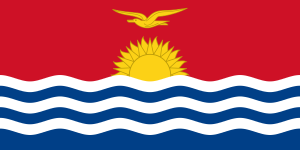 KIRIBATI
KIRIBATI

"Both western science and traditional science must travel together to build the resilience of our people in the Pacific."- Pelenise Alofa, 350 KiriCAN
What climate changes are occurring in Kiribati, and what’s next?
- The surrounding ocean is getting more acidic: Such acidity affects the ability of corals and organisms to construct their skeletons. Without these organisms, the local ecosystem's balance is put at risk.
- The sea level is rising: The sea around Kiribati has risen by between 1-4mm per year since 1993. While this is not as much as some surrounding islands, Kiribati is a very low lying coral atoll island, so small increases are significant if the island's coral system cannot adjust to these changing conditions, and "keep up" with the sea level rise. This is potentially devastating for both the population's safety and income. Increased sea levels leave the country more vulnerable to the high king tides which already cause flooding, while the coconut trees many rely on for income are sensitive to the increasingly saline groundwater.
- Temperatures have increased: Since 1950, temperatures at the country's capital city Tarawa have increased at a rate of 0.18°C per decade, and are predicted to continue increasing.
- More very hot and very wet days: Models predict that Kiribati will experience more very hot days, and have more days of extreme rainfall. While projections also show drought may occur less often, increased rainfall puts regions of the country at increased risk of flooding.
——————————————————————
More detailed information from the Australian Government’s ‘Pacific Climate Change Science Program’ can be downloaded here –> Kiribati Climate Change Factsheet PDF.
What are the Kiribati Governments climate change policies?
Kiribati's Government has a section of their website dedicated to climate change. The website has information on Kiribati's climate, the effects of climate change, the actions the government has and will take to combat these effects, and the Government's climate change adaptation program. The website can be viewed by clicking on any of the hyperlinks listed, or by clicking here.
——————————————————————
How do I Contact 350 KiriCAN?
You can email any of the following: [email protected], [email protected] or [email protected] if you have any questions, or would like information about climate change in Kiribati, or how you can get involved and contribute to the cause.
We’re currently in contact with a number of our team coordinators, representatives and volunteers on the ground in the Pacific Region – compiling information on the key climate issues facing the country, what our teams are doing locally, and how local groups are standing up and confronting the challenge of climate change.
As we compile more information, this link will be appropriately updated. So check back soon!
350 Pacific team
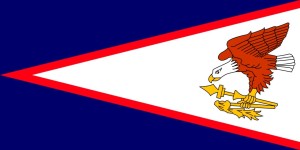 AMERICAN SAMOA
AMERICAN SAMOA
 What climate changes are occurring in American Samoa, and what's next?
What climate changes are occurring in American Samoa, and what's next?- Sea levels are rising: This poses quite a significant risk to the people of American Samoa, as the landmass is reduced, storm surges progress further inland, and salt sensitive crops and ecosystems are threatened.
- Coral Bleaching & disease prevalence worsening: Exacerbated by climate change, these impacts are becoming increasingly apparent. They pose a major, repetitive impact to the structure and function of local reefs (CORIS American Samoa).
- Temperatures are rising: Amongst the more obvious negative implications for plant growth, extreme heat and human health - increasing air temperatures may alter American Samoa's forest ecosystems, creating conditions for alien species to replace native plants and animals.
——————————————————————
A brief page of information from the American Government's American Samoan Environmental Protection Agency (EPA) can be viewed here --> American Samoa EPA.
What's been the American Samoan Government's response?
The American Government's EPA has released a number of statements on their website referring to climate change impacts on their coastal islands. One of these webpages is available here. Explore other areas of the EPA's website to learn more.
——————————————————————
We’re currently in contact with a number of our team coordinators, representatives and volunteers on the ground in the Pacific Region – compiling information on the key climate issues facing the country, what our teams are doing locally, and how local groups are standing up and confronting the challenge of climate change.
As we compile more information, this link will be appropriately updated. So check back soon!
350 Pacific team
 NIUE
NIUE

"We are done waiting, the action starts with us. Climate change is the challenge, and this is our fight."- Ina Vakaafi, 350 Niue
Who are 350 Niue, and what is its message?
350 Niue is part of an international campaign to get us back to a 350 parts per million world, the safe level of carbon dioxide in our atmosphere. We know it will be tough, but we are committed to this challenge. We recognise climate change as our generation's greatest adversary, but the warrior spirit within enables us to battle on, and rise above the challenge. We refuse to accept defeat, and one action at a time we can create the future we want, and a legacy we can be proud of.
What climate changes are occurring in the Niue, and what’s next?
- The ocean is more acidic: The ocean is absorbing a large proportion of the extra CO2, which then reacts with the sea water making it more acidic. This affects the ability of key ecosystem species such as corals to create their skeletons, affecting the health of local reef ecosystems.
- More extreme rainfall days, and extreme hot days: These are expected to occur more often, impacting agriculture and human health.
- More intense tropical cyclones: Increased uptake of heat by the oceans is likely to increase the power of tropical cyclones. The strength of cyclone wind is likely to increase by between 2 and 11%, while rainfall intensity within 100km of the centre will also increase.
- Sea level and air temperature will continue to rise: Air temperatures have risen by 0.15°C each decade since 1950. Under a high emissions scenario, sea level will rise up to 17cm more over the 21st century. Satellite data shows that sea level has already risen by 5mm each year since 1993.
——————————————————————
More detailed information from the Australian Government’s ‘Pacific Climate Change Science Program’ can be downloaded here –> Niue Climate Change Factsheet PDF.
What is the Government doing about climate change in Niue?
In 2009 the Government outlined its National Climate Change Policy, aiming to establish a "safer, more resilient Niue to the impacts of climate change" The policy report can be viewed here.
——————————————————————
Contact 350 Niue
We have a very active open group on Facebook, at www.facebook.com/groups/350Niue, which is consistently up to date with the latest news and events at 350 Niue. If you'd like to email us, you can send us an email to [email protected]. We'd love to hear from you, come along and get involved!
————————————We’re currently in contact with a number of our team coordinators, representatives and volunteers on the ground in the Pacific Region – compiling information on the key climate issues facing the country, what our teams are doing locally, and how local groups are standing up and confronting the challenge of climate change.
As we compile more information, this link will be appropriately updated. So check back soon!
350 Pacific team
 SAMOA
SAMOA
 What climate changes are occurring in Samoa, and what's next?
What climate changes are occurring in Samoa, and what's next?- It's getting hotter: The temperatures in Samoa are predicted to continue increasing, and by 2030 Samoa will be between 0.4-1.0°C hotter than it is today.
- The ocean is more acidic: A more acidic ocean impacts the health of the reef ecosystems, and will be compounded by increasing storm damage.
- More intense tropical cyclones: In the Samoa region, while it's expected that tropical cyclones may decrease in frequency, there will be an increase in the proportion of more intense storms. These storms are predicted have wind speeds up to 11% faster than today's cyclones, and the rainfall they produce will be more intense. The main driver behind this is the increase in ocean temperatures (Knutson et al 2010).
- Sea levels are rising: Sea levels have risen on average 4mm per year since 1993, slightly higher than the global average 2.8-3.6mm. Combined with more intense cyclones, continued sea level rise will threaten Samoa with inundation, flooding, and more severe storm surges and king tides.
——————————————————————
More detailed information from the Australian Government's 'Pacific Climate Change Science Program' can be downloaded here --> Samoa Climate Change Factsheet PDF.
What has the Government had to say about climate change?
Samoa's Minister of Natural Resources and Environment made a statement at the recent UNFCCC conference in Warsaw highlighting the importance of climate change adaptation funds, and emphasising the dangers to Samoa of more intense storms such as Super Typhoon Haiyan. His statement can be read at this link.
——————————————————————
We’re currently in contact with a number of our team coordinators, representatives and volunteers on the ground in the Pacific Region – compiling information on the key climate issues facing the country, what our teams are doing locally, and how local groups are standing up and confronting the challenge of climate change.
As we compile more information, this link will be appropriately updated. So check back soon!
350 Pacific
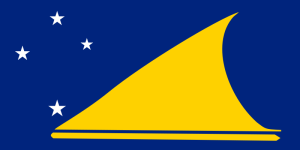 TOKELAU
TOKELAU

"So often the global media victimises the Pacific Islands, and portrays us as helplessly succumbing to climate change and the rising seas. But the global media know nothing of who we really are, or how it feels to live on these paradise islands we call home... We are not drowning, we are fighting."
- Mikaele Maiava, 350 Tokelau
What climate changes are occurring in Tokelau, and what’s next?
- Temperatures are increasing, and will continue to increase: It's predicted that the average temperature in Tokelau will increase by up to 3°C by the end of the century, under a business as usual high emissions scenario.
- Sea levels have risen: As the sea level rises, this places increasing pressure on the water supplies Tokelau depends on. Rising sea level makes it increasingly hard to protect the freshwater sources from encroaching salinity, while warmer oceans increase evaporative rates.
- The ocean is becoming increasingly more acidic: About one quarter of human produced CO2 is absorbed by oceans, making them more acidic. This impacts species vital to the tropical reef ecosystems. Coral reefs in the area are likely to reduce in size by up to 75% by 2100, according to the Secretariat of the Pacific Community. Acidification may place more pressure on fish supplies too, but it's believed that for the near future, the projected decline in coastal fisheries in the region will not affect food security.
- More extreme wet and dry periods: By the end of the 21st century, it's considered likely that both wet and dry extreme events will be more frequent. In addition, it's likely that rainfall will in general increase in the region by up to 20% by 2035.
——————————————————————
More detailed information from the Secretariat of the Pacific Community's Tokelau climate change summary is available for download here –> SPC's Tokelau Climate Change Factsheet.
What does Tokelau's Government think should be done about the problem?
In 2011, Tokelau Government representatives travelled to Durban, South Africa to participate in climate talks initiated by the United Nations (UN). Tokelau outlined how it was to become the first country to be 100% renewable, and called for a global climate accord which bound countries to emissions reductions. The full press statement can be viewed at this website.
——————————————————————
What’s the overriding message of your campaigns?
350 Tokelau believes that despite how we are portrayed in the global media, we are not helpless! As a country, we will not lay down and simply accept the loss of our homes. We believe that we can take action, and encourage others around the world to do the same. In October 2012, Tokelau turned off its last diesel generators, becoming the first country in the world to be 100% renewable! Not only are our energy sources cleaner, but the project saves the government over $800,000 a year, which will be redirected to other essential services like education and healthcare (https://tokelau.org.nz/Solar+Project.html).
Spurred on by this project, we joined our Pacific brethren on March 2nd 2013 to perform our unique war challenges, songs, and dances. We laid down a challenge to the fossil fuel industry, encouraging those nations to act as we have, and facilitate the move to better sources of energy! In 2014 we'll keep working in partnership with 350 Pacific to make our voice heard.
Contact 350 Tokelau
It’s best to contact at Mikaele's email address, which is [email protected]. Thanks and we look forward to hearing from people looking to volunteer, or get involved in our activities!
---------------------------------
We’re currently in contact with a number of our team coordinators, representatives and volunteers on the ground in the Pacific Region – compiling information on the key climate issues facing the country, what our teams are doing locally, and how local groups are standing up and confronting the challenge of climate change.
As we compile more information, this link will be appropriately updated with even more information! So check back soon!
350 Pacific team
 TONGA
TONGA

"Climate Change is affecting everyone in the island, especially our people's livelihoods in regards to disaster."
- Polikalepo Kefu, Tonga 350 Country Coordinator.
What is Tonga 350 all about?
Tonga 350 was first established in 2010, and has since had many members come and go. Despite the fact that our member base has seen some turnover, Tonga 350 is still going very strong! We want to keep recruiting for 2014, and our first goal of the year is to sit down with new members to set up a proper communication channel by which we can discuss 2014's activities!
What climate changes are occurring in Tonga, and what's next?
- Nuku'alofa's annual rainfall has decreased, but extreme rainfall days will increase: While dry season data shows little trend, there has been a clear reduction in wet season rainfall in the region of Nuku'alofa. However, climate change is expected to facilitate more days of extreme rainfall.
- Temperatures have increased, with more very hot days to come: By 2030, it's expected that if emissions continue on trend, Tonga will have warmed by up to 1.1°C. As temperatures continue to increase, so will the amount of very hot days.
- Sea levels are rising: Satellite data indicates that the sea level around Tonga has risen by 6mm per year since 1993, about double the global average. In Ha'apai, coastal erosion has carved up to 40m of land off the island. Fuka Kitekei'aho, Tonga's national co-ordinator of the Pacific Adaptation Strategy Assistance Program, says the rising sea level is compounding other issues on the island (source here).
——————————————————————
More detailed information from the Australian Government's 'Pacific Climate Change Science Program' can be downloaded here --> Tonga Climate Change Factsheet PDF.
What is the Tongan Government's official position on climate change?
In 2010, the Tongan government developed the joint national action plan on climate change adaptation and disaster risk management, for the period of 2010–2015. In addition, the government mainstreamed climate change into its new forest policy, which you can read about by clicking this link.
——————————————————————
What's next for Tonga 350?
Tonga 350's country coordinator Polikalepo is attempting to make 2014 the group's best ever, using his current connections and ties with the Tonga Red Cross Society and those made from his previous work with the Tonga National Youth Congress to encourage more Tongans to get involved. We hope that by educating the next generation of Tongans to the impacts of climate change, the country will be better prepared to deal with the hotter temperatures and extreme weather events, such as Cyclone Ian.
So, is climate change noticeably affecting Tonga now?
While no one extreme event should be attributed to climate change, more intense storms such as Cyclone Ian (effects pictured below) would be devastating for the island. Polikalepo was fortunate enough to visit the Ha'apai group of islands, Tongas most vulnerable region to the effects of coastal erosion. The recent cyclone and accompanying winds are made worse here due to the rising sea level, which gives storm surges a headstart. As the IPCC state; as sea level increases the chances of extreme sea level events, such as inundation due to storm surges from typhoons and other storms, increases sharply.
Contact Tonga 350
It's best to contact us by joining our facebook group at TONGA 350. Please join it to receive updates and information. We'd love to hear from you! Additionally you can email Poli at [email protected], or our new communications coordinator Taufu'i at [email protected]
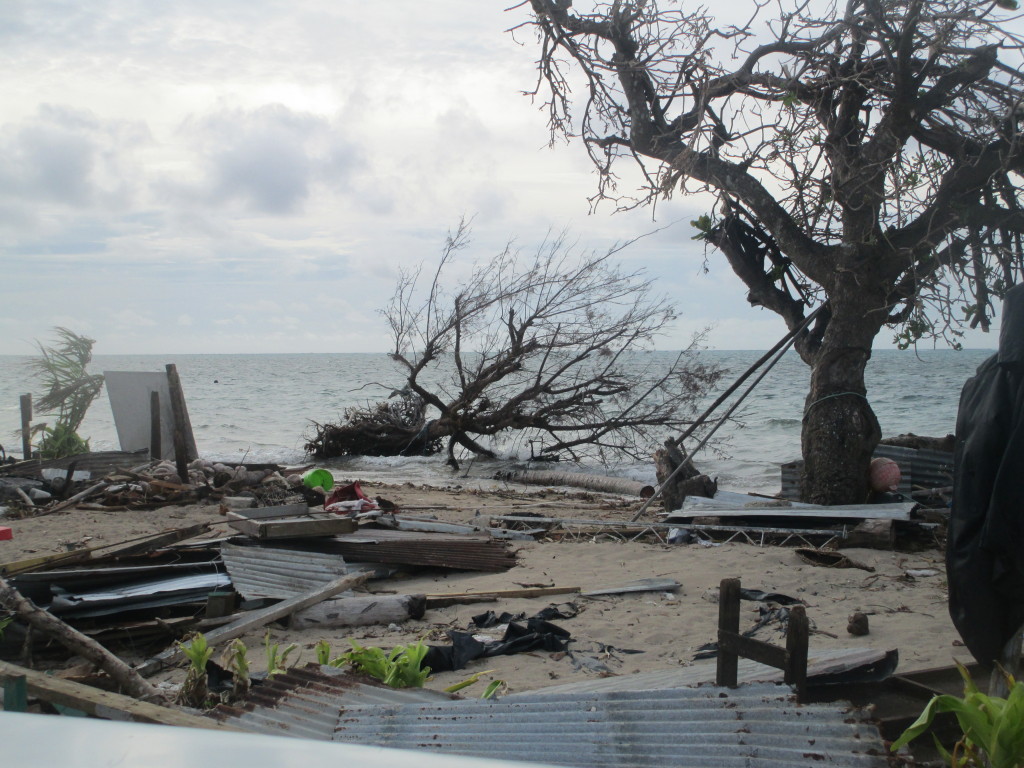
An example of the aftermath of Cyclone Ian. It's predicted cyclones will become more intense as climate change worsens.
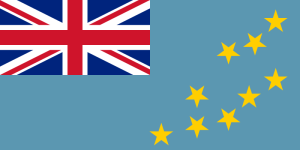 TUVALU
TUVALU

"On a day to day basis, it is becoming increasingly difficult to cope, as the adverse effects of climate change continue to escalate."
- Armstrong Asapo, 350 Tuvalu.
What is 350 Tuvalu all about?
Established in 2012, 350 Tuvalu believes in collective activism as a means of combating climate change. Together with other 350 groups around the globe, 350 Tuvalu believes that it is their responsibility to voice their concerns and raise the important issues of climate change with superpowers around the world. Our collective voice is one of our most powerful tools by which we can pressure those responsible for the majority of greenhouse gases to reduce their emissions.
While 350 Tuvalu has large global ambitions, our dedicated group is small. Lead by their passionate teacher and climate change activist Armstrong, the group mainly comprises of passionate school children from the Motufoua Secondary School (pictured below). They often meet after school to discuss local climate change warrior campaigns, awareness programs, and clean up campaigns.
What climate changes are occurring in Tuvalu, and what's next?
- Temperatures have increased dramatically, and will continue to increase: In the capital city Funafuti, maximum temperatures have increased quite quickly, at a rate of .21°C each decade since 1950.
- The surrounding ocean is becoming increasingly more acidic: About one quarter of human produced CO2 is absorbed by oceans, making them more acidic. This affects the growth of corals, and entire marine food chains.
- Sea levels have risen: Since 1993, sea level has risen a total of 9cm, at a rate of .5mm a year on average. This is quicker than the global average - and points to more damaging and disruptive storm surges in the future.
- More intense tropical cyclones: While it's predicted there may be less tropical cyclones, their intensity will increase. This means faster wind speeds, and greater rainfall intensity.
——————————————————————
More detailed information from the Australian Government's 'Pacific Climate Change Science Program' can be downloaded here --> Tuvalu Climate Change Factsheet PDF.
What is Tuvalu's Government doing to combat climate change?
Building upon its previous good work in the climatic sector, Tuvalu released its National Strategic Action Plan for climate change and disaster risk management for 2012 to 2016. The document emphasises the Government of Tuvalu's dedication to building Tuvalu’s capacity at all levels to adapt to climate change, as well as providing information on a number of strategies and policies. The document an be viewed by clicking here.
——————————————————————
What's the overriding message of the campaign?
We believe the main message of the campaign is the campaign itself. By getting a number of school children involved we can help teach the younger generation about climate change, and what the future may look like. Additionally, the kids gain valuable experience in organisation and leadership, which we hope they can promote to their friends and families. A second major message is one which runs throughout 350's current campaigns, which is one of belief! It's up to the people of the Pacific Islands to stand up and create the change they wish to see. So, the awareness programs and clean up campaigns around the islands help further this message.
What's next for 350 Tuvalu?
As the adverse impacts of climate change continue to grow unabated, so too must the Pacific Island warrior campaigns against climate change. 350 Tuvalu is hoping to increase its member base in 2014, and is looking forward to coordinator training which will occur in early 2014. Beyond this, we hope awareness campaigns and clean up campaigns will continue, and we will be involved in 350 Pacific's ongoing programs too!
Contact 350 Tuvalu
350 Tuvalu is always looking for more local members! If you'd like to contact us or get involved on the ground, please email [email protected].
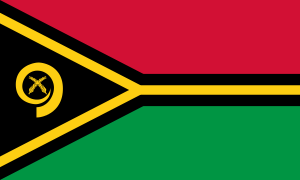 VANUATU
VANUATU
 What climate changes are occurring in Vanuatu, and what's next?
What climate changes are occurring in Vanuatu, and what's next?- Port Vila's wet season rainfall has decreased: While data shows a decrease in wet rainfall data since the 1950s, substantial variation in both dry and wet season rainfall remains.
- Temperatures have, and will continue to, rise: Annual maximum and minimum temperatures have risen by up to 0.18°C each decade since 1950.
- The sea level is rising: Expansion of warming sea water and ice melt is driving a sea level rise of 6mm per year, above the global average.
- More powerful storms: Although they may be less frequent, the damage caused by more intense storms, and more powerful ocean storm surges will rise.
- More very hot days: Hotter days and nights are not only uncomfortable, but may be problematic for island food production - as over 65% of the population rely on subsistence agriculture.
——————————————————————
More detailed information from the Australian Government’s ‘Pacific Climate Change Science Program’ can be downloaded here –> Vanuatu Climate Change Factsheet PDF.
What has been the Vanuatuan Government's official response to climate change?
The United Nations Information centre in Canberra state that 'Vanuatu has established a Ministry for Planning and Climate Change Adaptation, led by the Hon. Mr Thomas Laken, which is seeking to consolidate policy and planning and includes oversight of meteorology, geo-hazards, environment, energy and disaster management.' The entire article can be found at this link.
——————————————————————
What’s next for 350 Vanuatu?
2014 has started really positively for 350 Vanuatu. The calendar of events for 2014 has already been drafted, and many exciting things are on the horizon, starting with some local campaigning! We've already started our fundraising initiatives to better equip us to fight climate change on the home front, and perhaps overseas too (stay tuned!). We're also hoping to have our new 350 Vanuatu t-shirts printed soon, helping to both spread climate change awareness and attract new people to our cause. We're also in contact with the Government and some other local NGOs here in Vanuatu to see if we can help each other's causes.
—————————————————
We’re currently in contact with a number of our team coordinators, representatives and volunteers on the ground in the Pacific Region – compiling information on the key climate issues facing the country, what our teams are doing locally, and how local groups are standing up and confronting the challenge of climate change.
As we compile more information, this link will be appropriately updated. So check back soon!
